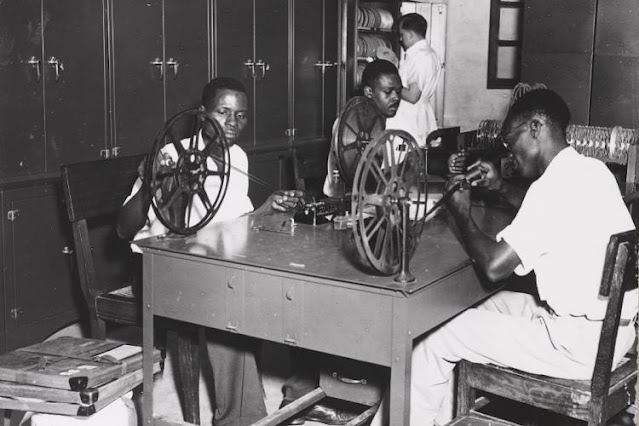The Cinema Of Stéphane Mercurio: Finding Oneself in the Truth of Others
Discovering Stéphane Mercurio's documentaries can be an inspiring journey. And where better to embark on this journey than at her retrospective in Paris? Let's explore together why it's an essential experience not to be missed.
Illuminating Invisible Lives in Cinema
This director's masterful use of simplicity makes the audience dive into each encounter with each protagonist. She crafts her unique cinema view through these often-overlooked figures— rich in empathy and humility, where the personal seamlessly transforms into the universal.
Stéphane Mercurio skillfully captures the daily struggles of vulnerable individuals in her documentaries, exposing fully the profound impact of human fragility on their lives. Already on from beginning of January to March 16 2024, her work will be
showcased in a retrospective “Stéphane Mercurio, la parole aux Invisibles” at the Centre Pompidou.
Fig.1 Two People’s hugging while walking in a field, photo by DR ©
Humanity: The Focus of Filming
Stéphane Mercurio declares that the essence of cinema, as she means it, lies in documentaries; focusing on “les gens de peu,” she aims to portray people's sense of inequality in a fractured social setting as we experience it today.
Putting her perspective at the centre of attention, she states, “Our role is to listen, feel, and connect with people.” Therefore, her productions highlight the unrecognised, whose feelings remain unnoticed or unacknowledged by society.
Human beings aren't isolated entity. This viewpoint signals a shift in our understanding of human relationships. We transition from circular causality, where actions and events are mutually interconnected, to direct one-way connections, where each action or event has a clear and direct cause-and-effect relationship with us.
It remains inevitable to recognise how society's influence affects everyone and how the approval and recognition or otherwise of our emotions can either destroy or help - each of us can contribute in a small way.
Fig 2. Lady sitting among empty benches, photo by DR ©
Etymology of Mercurio’s Visuals
Mercurio refrains from commentary in her works, letting her protagonists tell their stories. This approach enables the audience to experience the emotions and events of these individuals authentically, relying solely on their words. This way, the documentaries provide an unfiltered view into their lives, creating more intimate and connected stories.
Key elements in her stylistic approach, such as deprivation of freedom, violence of the senses, compassion, dignity, and resistance, take on unique significance.
Central to her vision is the connection between fighting and resisting; Mercurio believes as reported by the Forum Des Images that “if we do not resist if we abdicate if we bow to power and surrender, we are reduced to nothingness.” This results in a society where intimacy is viewed as a connection with oneself, turning individuals into tightrope walkers balancing between their reality and a social dimension that must acknowledge them or else transform each day into a reality of increasingly tangible emotional violence.
An objectification of values occurs, turning what was once subjective into the collective experience and property of others.
Fig. 3 - Man’s back in jail cell, photo by Iskra ©
The Prison Experience: The Monster and the Mask
In her portrayal of individuals in jail, Stéphane Mercurio deviates from the conventional representation of them as grotesque figures. She captures the essence of the human soul in confinement. Through her lens, she unveils a nuanced exploration of the profound contradictions within incarcerated individuals, delving into their inner worlds' complex and unsettling aspects.
By moving beyond stereotypical portrayals, Mercurio aims to bring forth a more empathetic and authentic understanding of the individuals behind bars, underlining the complex layers of their human experiences and struggles.
This priority on capturing the genuine human experience within the context of imprisonment holds significant implications. It underscores the strong correlation between our own ideas and social circumstances. Stéphane Mercurio enables us to see this contradiction thanks to the authenticity of human narratives in confinement, adding a valuable dimension to the ongoing dispute surrounding the relationship between social conditions and individual perceptions.
Ultimately, what bears the adjective helpless or monster in the social narrative? Stéphane Mercurio is convinced that “there are probably some atrocious, monstrous perverts, and then there are men who suffer their own violence”.
Through her work, one has to examine one's conscience and ask oneself what it is that frightens us? Perhaps it is the ability to transform these people into a truthful and authentic mirror of our most fragile emotions projected on people whom society relegates to violence, without dignity.
Finally, Stéphane Mercurio frees herself of all hypocritical and vacuous moralism in her documentaries, giving us a clear and tangible representation of the role of our shattered ego in today's world.
By Valeria Morterra





Comments
Post a Comment